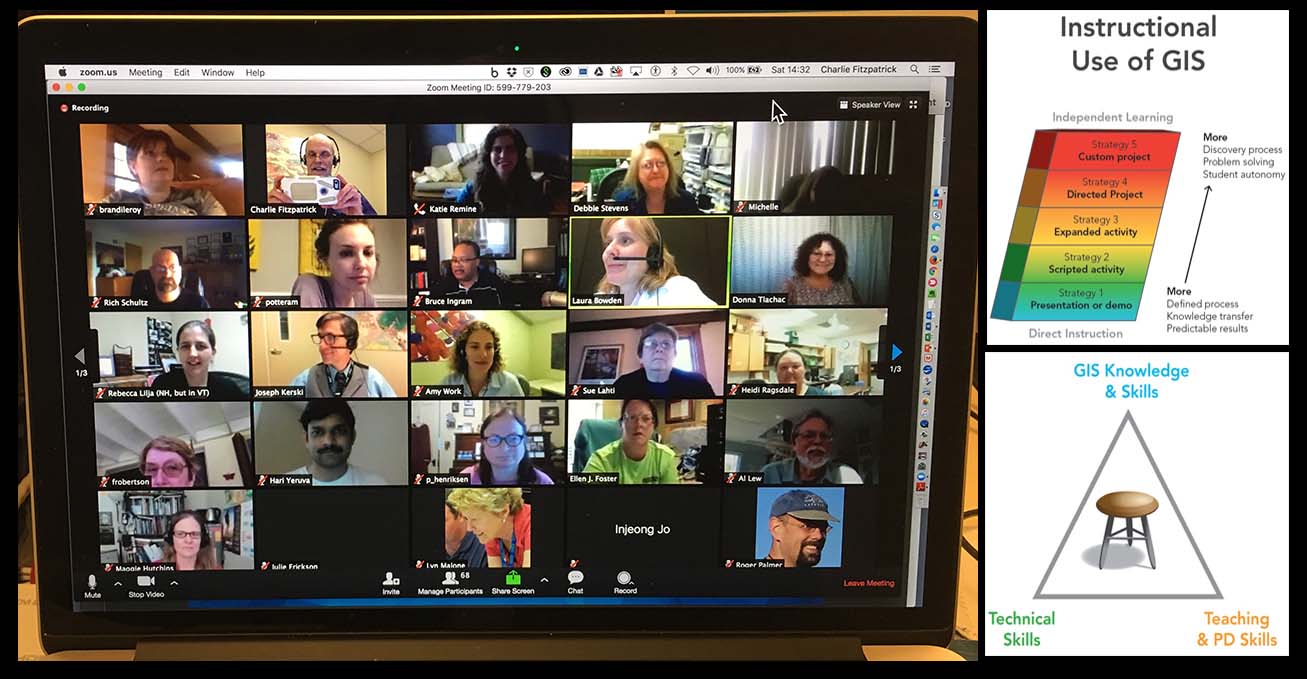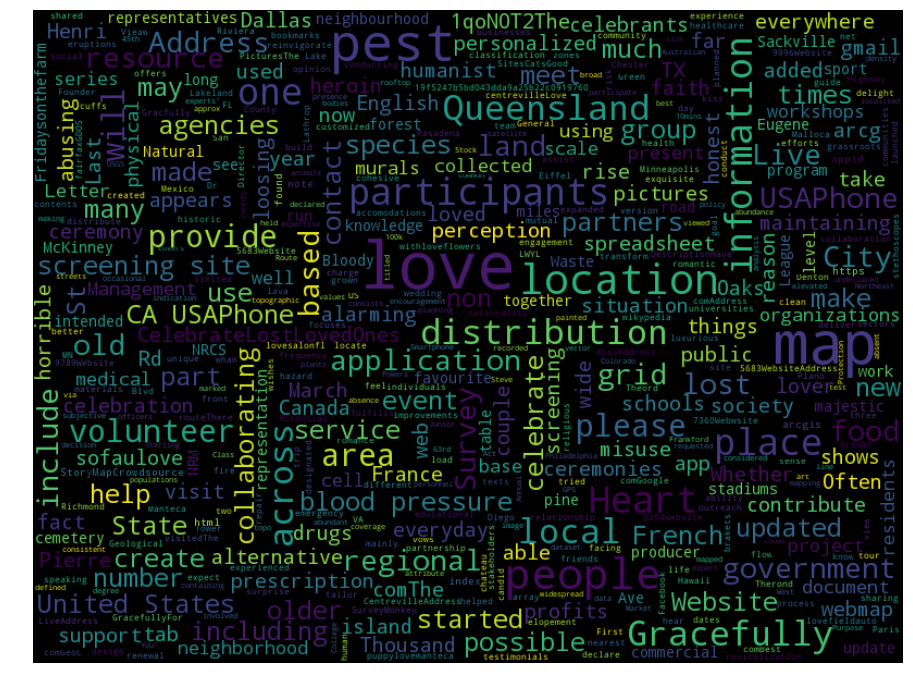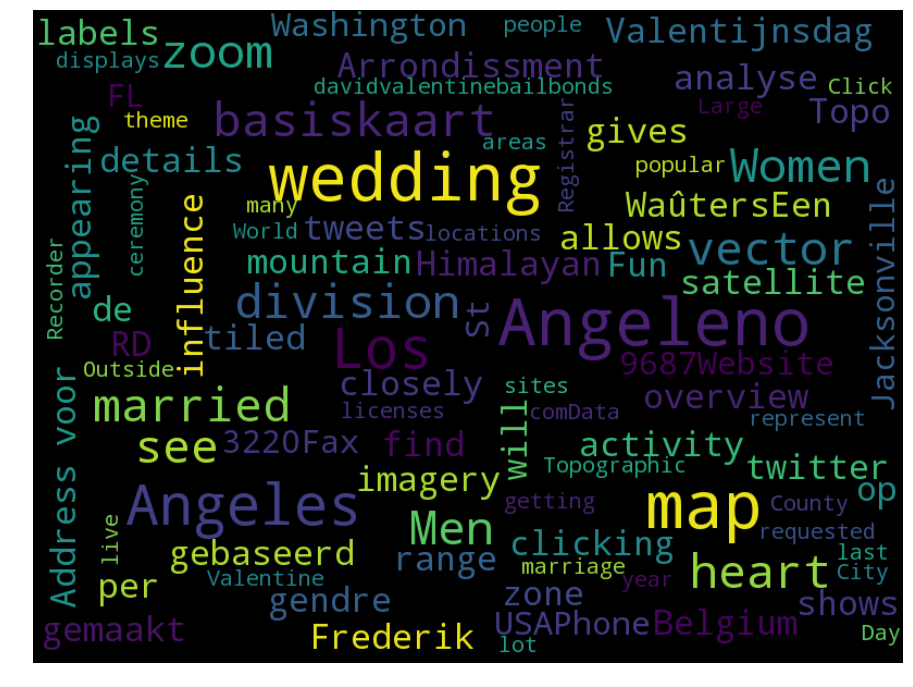As I frequently teach hands-on workshops so that people can see for themselves the power and data that is at their fingertips using modern GIS technologies, I wanted to share the workshops and short courses below. These are chock-full of activities and I invite you to use these activities in your own courses.
For activities inside a Architecture Engineering and Construction program, let us focus on the following:
1. See attached presentation on the intersections and forward movement of GIS, CAD, BIM, and AEC.
2. Tools: ArcGIS Urban, City Engine, ArcGIS Pro.
For activities inside a Computer Science program, let us focus on the following:
1. Tools: ArcGIS Pro, the ArcGIS API, Javascript, ArcPy, and Python. Jupyter notebooks.
2. Resources: The Labs on https://developer.arcgis.com, the Arcade scripting language in ArcGIS Pro and ArcGIS Online.
3. What are the chief programming topics (knowledge, skills, practices) and software that are necessary in the geospatial industry? · Using Jupyter Notebooks within ArcGIS Pro, scripting (Python with ArcPy, ArcGIS), GIS database programming, GIS algorithm implementation & optimization, desktop application development (C#, Java, ArcGIS Runtime SDKs, GDAL), mobile app development (ArcGIS Runtime SDKs and ArcGIS API for JavaScript, web application development (JavaScript with APIs from ArcGIS, Leaflet, Mapbox, OpenLayers), statistics (R, Matlab, the ArcGIS - R bridge), big data analytics (Tensorflow, Hadoop, Spark).
4. How many GIS programming courses of different levels should be provided, and which levels should be required for the completion of the degree? Some of the differences might include broad troubleshooting skills for a variety of systems. The ability to adapt and change based on requirements from management or budgetary-related is critical. The ability to inherit, improve or maintain systems that you didn’t necessarily create and which may be outdated and potentially involve unsupported implementations or implementations that don’t use best practices.
5. When creating courses, consider the following important topics and course listing: Intro to programming concepts, segments that focus on debugging skills, Intro and Intermediate courses on JavaScript, Intro and Intermediate courses on Python; other computer science courses as electives (e.g. algorithms). Again, use ArcGIS Pro with the new Jupyter notebooks embedded capability!
6. How to convince others that GIS Programming courses are important? GIS is simply map-enabled computer science, however, there is some overlap between GIS and CS for certain job requirements. Some skills are critical for all GIS students such as Python, for example. Understanding basic programming concepts and modern web GIS architecture only helps to ensure student success when they graduate. Every student needs to be proficient in building websites or native applications, but if they have the basics then they will be more adaptable. There is a spectrum of needs in GIS that ranges from little-to-no-programming-skills-needed to fully custom application building. The fundamentals of “how” programming languages work may not have changed much (e.g. variables, data structures, control structures, etc), and these fundamentals can be applied across a variety of languages. What is changing very rapidly are the programming languages themselves. Web browsers and JavaScript are examples of unbelievable rapid change. One challenge is to keep curriculum current with the latest that languages have to offer. One goal is to teach students flexibility in how to learn programming languages and to learn how to adapt. Also, with programming languages, you really only learn by doing it, in hands-on mode. It’s not something most people can read in a book and then successfully apply it.
For activities inside a business course, let us focus on the following:
1. My presentation - Spatial and Critical Thinking in Research and Instruction: Why and How Spatial and critical thinking in business research and instruction - why and how. Includes links to interactive web maps and tools.
2. See attached regional convenience store activity.
3. Exploring the demographics of 50 states using infographics: https://esribizteam.maps.arcgis.com/apps/MapJournal/index.html?appid=bdfc563d4eac45b8a0e2aa350b95df9...
4. Top 10 features about Infographics: Top 10 Business Analyst Infographic Features.
5. Tools: Business Analyst Web, ArcGIS Online, Survey123, ArcGIS Pro.
6. See attached slides on why the WHERE matters in business.
For activities in a remote sensing course, let us focus on the following:
1. Change Matters viewer: ChangeMatters :: Using Landsat Imagery to Map Change to analyze change over space and time: Aral Sea, Mt St Helens, Dallas-Fort Worth TX, and elsewhere.
2. Wayback high resolution historical imagery: https://community.esri.com/community/education/blog/2018/10/18/analyzing-change-over-space-and-time-... Examine how these places have changed: Lake Mead, Plano Texas, Beachy Head England, the Three Gorges Dam in China, and your own community.
3. Landsat 8 app: Landsat Explorer Analyze different spectral bands, create a swipe comparison map, filter data, and more.
4. Sentinel-2 imagery to analyze the eruptions in Kilauea: https://community.esri.com/community/education/blog/2018/06/29/using-two-new-tools-to-analyze-the-er... Add data from the Living Atlas: Sentinel-2 views, bands 12, 11, 2, Filter on Acquisition Date of 23 May 2018, Image display as Geology with DRA, stretch, analyze.
5. Tools: ArcGIS Pro, ArcGIS Online. Data: Imagery and other content in Living Atlas of the World.
For the environmental science course, let's focus on the following activities that I created:
A new Higher Education GIS Immersive Hands-On Workshop - Joseph Kerski, Ph.D. - GeographerJoseph Ker... These include examining the global water balance, stormwater, ecoregions, population change, migration, field surveys, and much more.
For a crime analysis course, let's focus on analyzing crime in Lincoln Nebraska, as follows: Search ArcGIS Online for crime Lincoln Nebraska and open the following web map: https://www.arcgis.com/home/item.html?id=d0506cc0f18e4e19a771f84319e24773. You will see crime point locations, city limits, police stations, and police districts. Change style for police stations to Safety-Health - Badge. Change style for districts to unique symbol - color. Label the districts by number. Use Proximity to create 5 minute drive time around stations with dissolve option. Next, calculate the percentage of crime within 5 minute drive times using the Aggregate Points tool. For Choose layer containing points to aggregate into areas, choose Crime. For Choose layer containing aggregation areas, confirm that Five-Minute Drive-Time from Stations is chosen. Change style on crime to map specific crimes, such as theft. Change style on crime to see crime as heat map. Examine imagery with labels to determine areas where more crime seems to be occurring. Create hot spot map of areas of significant clustering of crime.
For a GIS in the Humanities course, let's focus on the following:
1. Explore the Digital Humanities map collection: Story Maps and the Digital Humanities
2. Build your own story map: https://community.esri.com/community/education/blog/2017/07/26/10-things-you-can-do-with-arcgis-onli... > Scroll down to #2: Story Maps. Build a map tour, then, time permitting, a map journal.
3. 5 Forces acting in society to bring us to this pivotal moment in geospatial technology and spatial and critical thinking: https://denverro.maps.arcgis.com/apps/MapJournal/index.html?appid=fb060544d4bc4d15a1b8bed38048859b
4. Data quality and societal issues: https://spatialreserves.wordpress.com My co-authored data book and blog.
5. Collect, map, and analyze field data with Survey123: Use this form to collect tree height, tree species, and tree condition: https://survey123.arcgis.com/share/933b03f8109e411cab344453dbd7a865 Examine the resulting map on: http://arcg.is/1COi0z . If you need the long URL, it is:
http://www.arcgis.com/home/webmap/viewer.html?webmap=434cbc3ca6a342eca3122f08414e2be4&extent=9.9432,...
After uploading a test point to this Survey and seeing your results on the map, create your OWN survey on this or another topic (historical sites, homes, something else in your community) using the web form method via http://survey123.arcgis.com/When your survey is finished, create a map from your survey and examine the pattern of your results. Save and share as appropriate.
For activities in a Digital Earth, Geography, or Smart Planet course, let's focus on the following:
1. 10 things you can do with ArcGIS Online: 10 Things You Can Do with ArcGIS Online in Education
2. Teaching with web apps: apps_teaching_with_activity.pdf - Box These include examining Pacific typhoons in 3D, demographics of Zip Codes, creating viewsheds and buffers, and much more. These apps are easy to use and yet very powerful.
3. Introduction and Advanced Work with Story Maps: Slides with core content with short activities and longer hands-on exercises. These activities and exercises include how to build a story map from a web map, and how to build map tours, map journals, swipe, series, and other types of story maps.
4. 6 methods to map your own data: https://community.esri.com/community/education/blog/2019/02/18/4-methods-to-map-your-own-data-a-work...
For examining the topic of Data Quality, Data Sources, and Spatial Analysis in ArcGIS Online, let us focus on:
1. Why data quality matters, now more than ever: Why Data Quality Matters More Now Than Ever
2. Data sources, data quality, and societal issues: https://spatialreserves.wordpress.com
3. Trace downstream. First add World Hydro by Esri, data to ArcGIS Online map.
4. Examine county health rankings, practice Arcade scripting: https://www.arcgis.com/home/webmap/viewer.html?useExisting=1&layers=c2d611adace94b488bfbf280dd591a7c
5. Analyze zebra mussels from 1986-2011: https://denverro.maps.arcgis.com/home/webmap/viewer.html?webmap=a5cc4d8c8e9547ccaa76d70018f30fa2 Summarize center and dispersion.
6. Boulder County Hazards starting point: https://www.arcgis.com/home/webmap/viewer.html?webmap=d19b5a39eb3446a299e1e2f5dd25a44d Determine which areas are in floodplains AND in major geologic hazards, enrich final results with group quarters.
7. Cholera 1854 study starting point: http://esrit3g.maps.arcgis.com/home/webmap/viewer.html?webmap=87c0f79108e246d49f97a6cfe4fce157 Determine which water pump had the most cholera cases within 500 feet, determine optimal walking route for Dr Snow to visit each well.
8. Real time weather analysis: https://denverro.maps.arcgis.com/home/webmap/viewer.html?webmap=8fbd18ed975f49c8a59b9f25f2b9f7a6 Symbolize data, create interpolated surface of temperature. The full lesson I authored is here: Predict weather—Predict Weather with Real-Time Data | ArcGIS
9. Join data to the Living Atlas of the World. Start with this world earthquakes map: http://denverro.maps.arcgis.com/home/webmap/viewer.html?webmap=63a6261d7afa48878a52a4c7127f624e and join contents to the Living Atlas of the world to understand the number of earthquakes by country. The full lesson I authored is here: https://community.esri.com/community/education/blog/2018/09/17/spatial-joins-with-arcgis-online-and-...
10. The world of 3D analysis and visualization is also at your fingertips with cloud-based tools, as I show here of earthquakes: Scene Viewer



